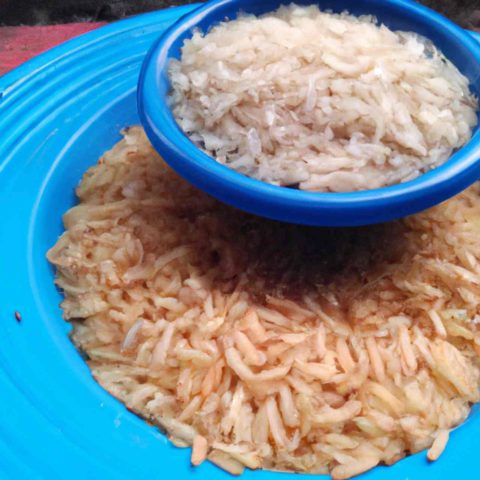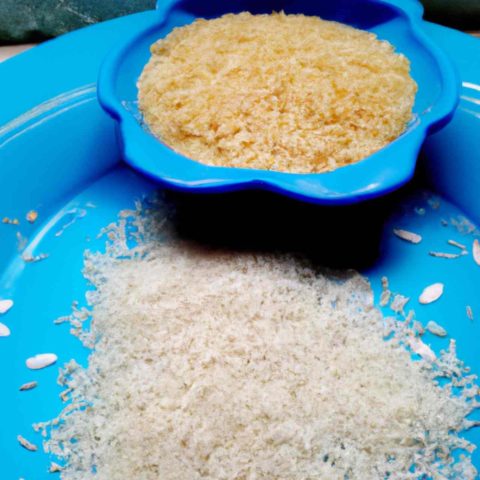There are many different varieties of rice, each with a unique texture and flavor. Plus these different types of rices can be grown in disparate settings, eg upland rice is quite different than deepwater rice. Yet, you can get rice varieties in all these locations.
Short, medium and long-grain rice are the most popular types, but which one is right for you?
Here’s a look at the differences between these three types of rice.
When do you weigh rice, before or after cooking.
The Differences Between Short, Medium, and Long-Grain Rice
The differences between short, medium, and long-grain rice can be slightly confusing at first glance.
Rice cakes are usually made of short-grain rice, further Rice cakes can last a long time if stored correctly.
While all three types generally share many of the same nutritional properties and cooking methods, there are some key distinctions that set them apart from one another.
For example, regarding which type of rice is best for your health, long-grain rice tends to have an edge. This is due to its higher fiber content, which helps to keep you feeling full and satisfied for longer periods of time.

Further Long Brown Rice, and American short grain brown rice are two of the most common variety.
In contrast, short-grain rice has a higher glycemic index, meaning that it digests more quickly and can lead to spikes in blood sugar levels.
Regarding which type of rice is best for cooking and preparing different dishes or sticky rice, medium-grain rice tends to be the most versatile.
It has a slightly stickier texture than long-grain or short-grain rice, making it ideal for things like stir fries, pilafs, and other similar dishes.
What is Short-Grain?
Short-grain is a type of rice that is known for its rich, nutty flavor and chewy texture. This particular variety of rice has an extra short grain size that makes it ideal for use in dishes like soups, and stews. It is also commonly used as sushi rice and other Asian dishes as well.
It has a high starch content that gives it its sticky texture when cooked, making it perfect for dishes like risotto or sushi.
In addition to its great flavor and versatility, short-grain rice is also a nutritional powerhouse, containing high levels of vitamins and minerals like iron, thiamin, niacin, vitamin B-12, and folate.

Medium-Grain
Medium rice grains are a type of rice that is known for its firm texture and nutty flavor. This variety has a slightly chewy grains consistency, making it perfect for serving with rich, savory dishes like curries or stir-fries.
The unique texture and flavor of medium-grain rice make it one of the most popular types of rice in many parts of the world. It is also a very versatile ingredient, as it can be used to make a variety of dishes, from fried rice and pilafs to desserts like rice pudding.
Long-Grain
Long rice grain is a type of superfood that has been gaining popularity in recent years due to its many health benefits. This nutrient-rich food is made from the starchy part of a rice plant and is known for its long, slender shape and deep golden color.
Long rice grain contains an impressive amount of vitamins, minerals, and antioxidants that can help promote overall health and well-being. It is also a great source of dietary fiber, which aids in digestion and helps to keep you feeling full for longer periods of time.
In addition to its many nutritional benefits, long rice grain has been shown to have anti-inflammatory properties, making it an ideal food for people suffering from conditions like arthritis and joint pain. The Upland Rice Variety is a prized variant of this grain length.
Can You Use Short, Medium, and Long-Grain Rice Interchangeably?
The answer to this question is a bit more complicated than it may seem at first.
There are actually some important differences between these different kinds of rice regarding cooking methods and flavor profiles.
For example, short-grain rice is best suited for dishes with sticky rice textures and/or intense flavors, like rice for sushi or risotto.
Deepwater short grain rice is also good for sushi rice.
On the other hand, medium-grain rice is typically better for dishes with milder flavors and less complicated textures. This type of rice works well in things like stir fries or pilafs.
And finally, long-grain rice is the best option for dishes that require a more fluffy and light texture. This type of rice is often used in things like fried rice or casseroles.
So can you use short, medium, and long-grain rice interchangeably? In general, it depends on what kind of dish you are trying to create and what type of flavor and texture you are going for.
Overall, it’s clear that there are many factors to consider when deciding which type of rice is right for your cooking style.
In the end, it takes some practice and experimentation to figure out what works best for you – but with a little bit of time and effort, you’ll be a pro at using short, medium, and long-grain rice interchangeably in no time!
Is Basmati Long or Short Grain
Basmati rice is a type of long-grain rice that comes from the Himalayan foothills of India. It is a staple food in Indian as well as other South Asian cuisines, and its origins may be traced back to the Himalayas.
Is Jasmine Rice Long or Short Grain
Jasmine rice is a sweet long-grain variety that works wonderfully in dishes inspired by the cuisine of south-east Asia. Because the natural scent goes well with a wide variety of spices, it is frequently used in stir fries and curry. This rice will be somewhat sticky, but it will still have a fluffy texture.
Can I Substitute Medium-Grain Rice for Long Grain
In most cases, you can replace medium for long grain with another without much of a difference in the end dish.
Some people believe that medium-grain rice, which has a little shorter shape than long-grain rice but is otherwise the same, is practically identical to short-grain rice. It is true that as it is cooked, it becomes sticky, much like short-grain.
Is Medium or Long-Grain Rice Better
Long grain rice is better for most dishes like curries. Furthermore, it is easier to cook because it does not stick to pans or pots.
Medium-grain rice is good for dishes where you want a slightly softer texture.
Cooking brown rice is very similar to cooking white rice. The only difference is that brown rice requires longer cooking times.
When it is cooked, rice with long grains has a natural tendency to become light and fluffy and to separate rather than to clump together. When cooked, rice with a medium grain size tends to become moist and tender, whereas rice with a short grain size tends to produce what is known as sticky rice and tends to cluster together when cooked.
What is medium-grain rice best for
When it is cooked, white rice with a medium grain size becomes round, delicate, and succulent, which enables it to retain more moisture than other types of rice. In meals like paella and risotto, which call for a little bit extra creaminess, this type of rice is frequently utilised. Additionally, it works wonderfully in all of your favorite meals from the Middle East, Korea, and Spain.
What Is Short-Grain Rice Best Used For
When cooked, short-grained rice may get sticky. Use them to make rice pudding or sushi.
Conclusion
When it comes to rice, the length of the grain is an important factor to consider. Overall, choosing the right length of grain for your dish depends on both taste and texture preferences. So before you cook up some amazing rice-based meals, take a moment to think about what kind of experience you want your diners to have. All types of rice – short, medium, and long-grain – will tantalize your taste buds!